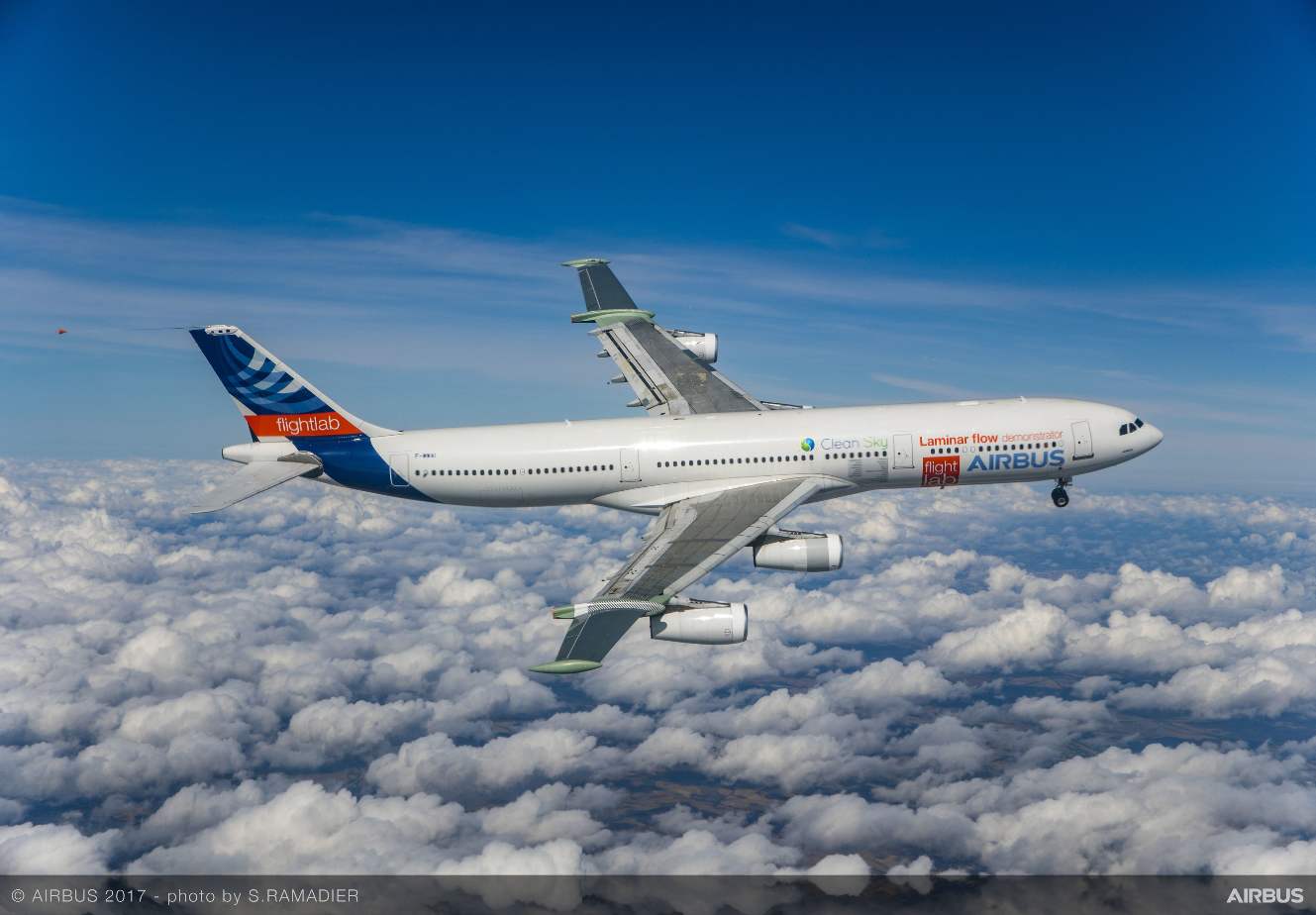Airbus took advantage of the ILA show to highlight its “Flight Lab” BLADE demonstrator aircraft for the first time at a major air show.
Airbus took advantage of the ILA show to highlight its “Flight Lab” BLADE laminar aircraft demonstrator aircraft for the first time at a major air show.
The BLADE project, which stands for “Breakthrough Laminar Aircraft Demonstrator in Europe”, is part of the first phase of Clean Sky – a €1.6bn programme which has been running since 2008. BLADE is designed to assess the feasibility of introducing laminar flow wing technology on a large airliner. It aims to improve aviation’s ecological footprint, thanks to a 10% improvement in aircraft drag and up to 5% lower CO2 emissions.
The A340 laminar-flow Flight Lab test demonstrator aircraft (A340-300 MSN001) made its successful maiden flight in September 2017 and since then has tested the wing’s characteristics in flight. Airbus says the test aircraft is the first in the world to combine a transonic laminar wing profile with a true internal primary structure.
The aircraft is fitted with two representative transonic laminar outer wings, while inside the cabin there is a highly complex specialist flight-test-instrumentation (FTI) station. The extensive modifications to the A340-300 test-bed aircraft were performed over a 16-month period in Tarbes, France, with the support of the programme's numerous industrial partners across Europe.
In terms of the testing technology, Airbus underlines the use of infrared cameras to monitor the laminar flow transition points and the acoustic generator which measures the influence of acoustics on laminarity. Another first is the innovative reflectometry system which measures overall deformation in real-time during flight.
To date the Flight Lab has performed 66 flight hours. Flights will continue until 2019, dedicated to exploring the factors that influence laminarity.

